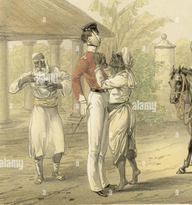Entering two years into a global pandemic and a mask-mandated world, subversive trends — especially face coverings — have caught the attention of young designers.
Balaclavas have been the latest staple accessory in major runways and are dominating social media feeds. As polarizing as the fashion statement may be, balaclavas have gathered over 130 million views on TikTok and have risen to fan-favorite status within mainstream fashion.
With indie sleaze fashion making a resurgence to mainstream media and Milan catwalks, the balaclava is the latest coveted accessory that has young creatives demonstrating their DIY skills by picking up knitting needles, hot glue, and charms. Once considered an unapproachable accessory, the balaclava is manifesting into a radical, self-expressive take on fashion with its surprising versatility, from knitted bunny ears to chainmail-adorned devil horns.
The tight-fitted, knitted headgear usually covers the entire face with a gap left for the eyes. The style is reminiscent of a ski mask or even styles adorned by the feminist punk band Pussy Riot but is now at the forefront of red carpets and designer collections. The headwraps come in a variety of styles: exposing just the eyes, exposing the eyes and mouth, or exposing the entire face and sitting around the ears.
Once worn only by bank robbers and European soldiers, the maximalist fashion crowd approves of the melancholic, Slavic makeover that the holy grail of winter accessories offers. As reported by a recent Guardian article, the secondhand, vintage clothing site Depop has seen a 145% increase in searches for balaclavas.
The global fashion platform Lyst has experienced a 334% increase for knitted hoods from 2020 to 2021. During the pandemic, online searches for balaclavas rose over 59% between 2019 and 2020.
The History of Baclavas
There’s no denying that we’re experiencing an appreciation for the Slavic style as romanticism for post-Soviet and post-punk culture aesthetics is trending.
Balaclavas were originally named after the Battle of Balaclava, a battle fought in the Crimean War in 1854, during which Ukrainian soldiers wore similar masks. Women would knit head coverings for troops fighting in the brutal cold, and the head covering helped soldiers fight off freezing temperatures through the eastern-European winters. Many soldiers didn’t receive warm uniforms, so they improvised and bought hats from local women. At the request of the military, locals came up with the headwear style that was later named “balaclava.”
The accessory served as the cherry on top of Kim Kardashian’s sleek black Met Gala look by Balenciaga, which included a full-face covering. The piece has also become popular among Gen Z because of the fashion neutrality and comfort it provides, as gender norms become more fluid.
Some of fashion’s biggest names have indulged in their own takes on the balaclava. Belgian designer, Raf Simmons, capitalized on the accessory by launching a collection of 65 looks with the models wearing balaclavas for Calvin Klein’s 205W39NYC Fall ‘18 collection.
The designer talked about the safety aspect of the design that echoes its original use against cold, environmental forces. Brands like Miu Miu, The Frankie Shop, Alanui, Deima Knitwear, Jacquemus, and Balenciaga are selling versions of the face coverings. The apocalyptic flavor of the balaclava can be seen at Alexander Wang, Gucci, and Preen as designers pair it with rubber boots, heavy coats, and hazmat suits.
Even though the balaclava is seen as a fashion statement, the garment can be associated with anarchy. Several brands like Nike have been criticized for racial stereotyping of Black youths and encouraging “gang culture.” Nike responded by saying it was designed for cold-weather sports and recreational use.
High fashion brands, and their fast fashion counterparts like Zara and Shein, are making balaclavas widely accessible. The accessory is most coveted by independent creators that push the garment into the realm of subversive art wear.















